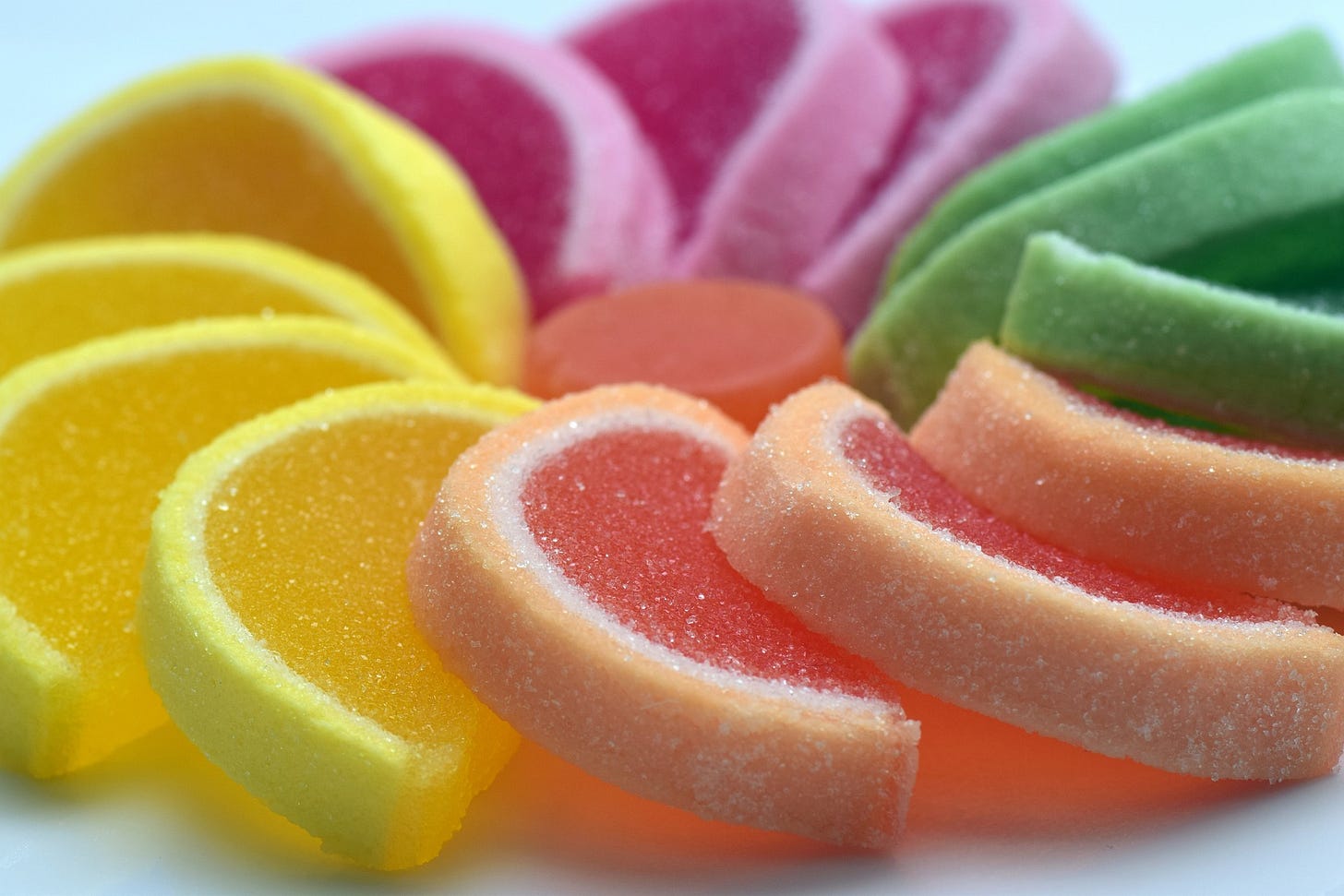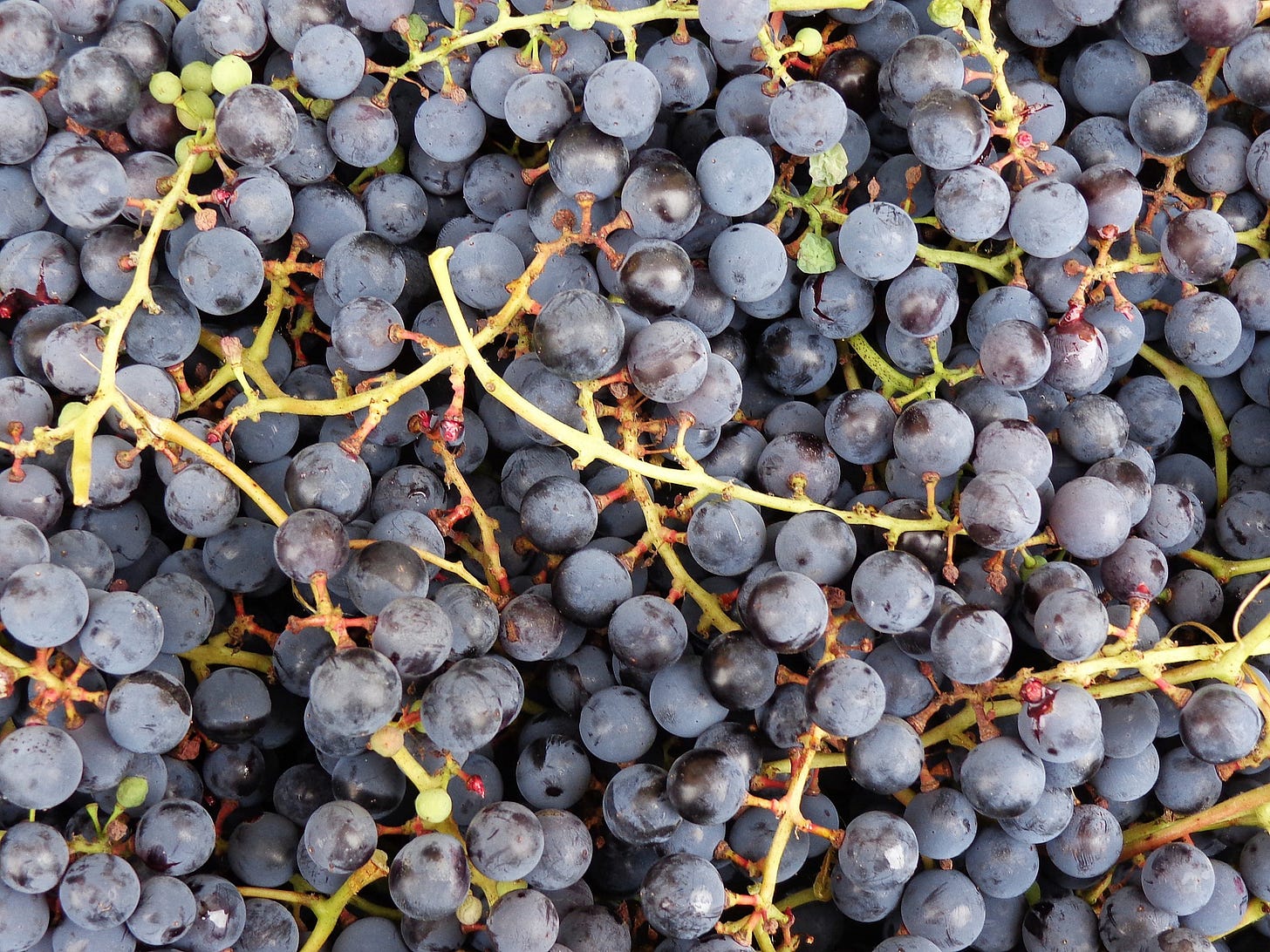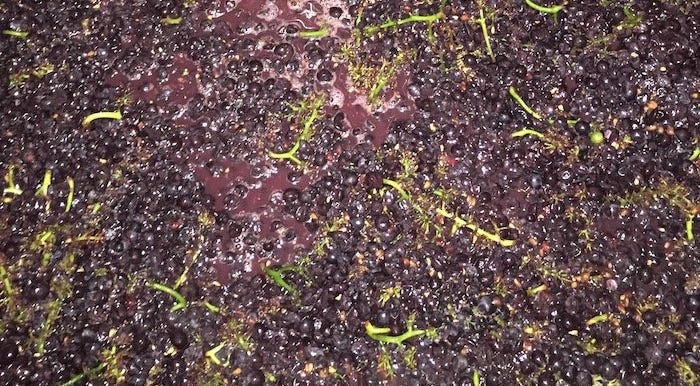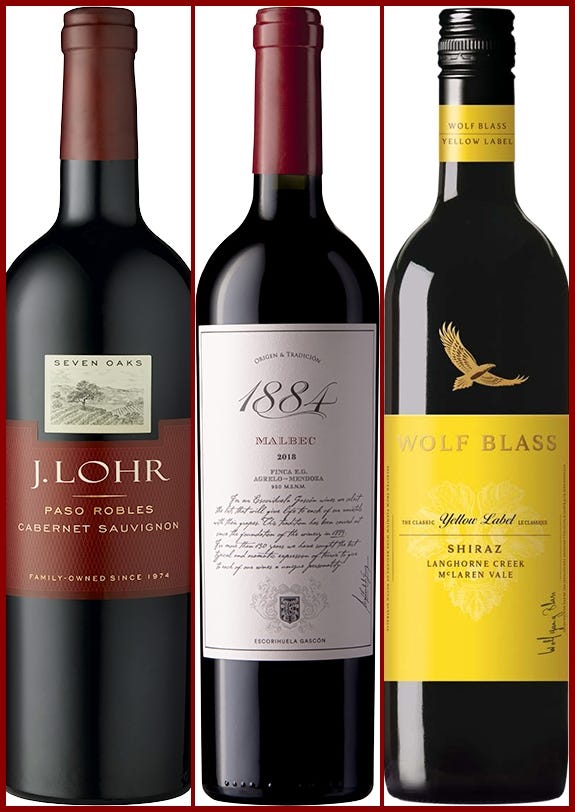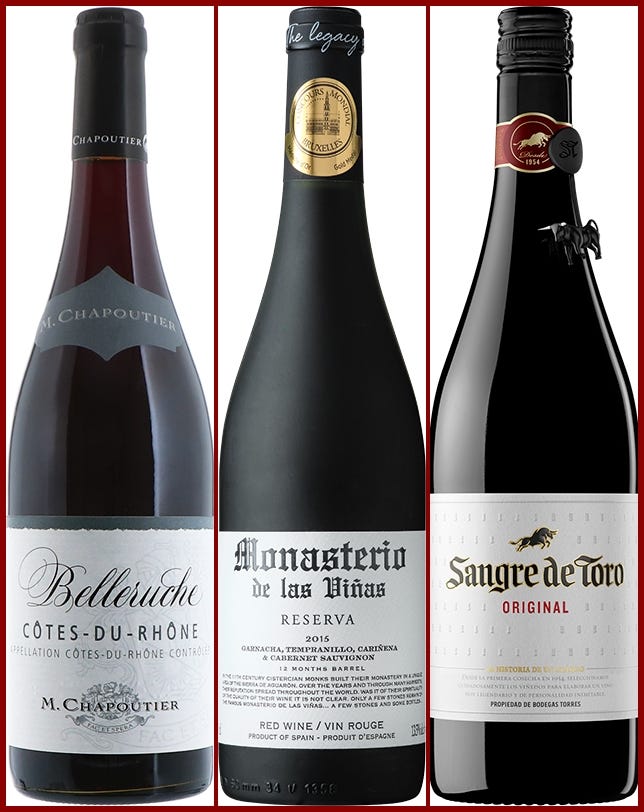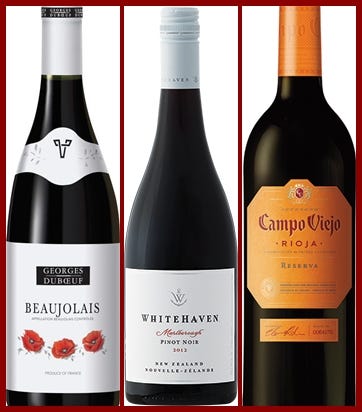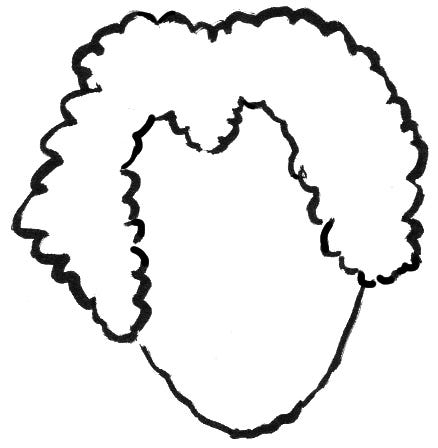Perception & Reality in Dry Red Wine Styles #10
How Fruit Character & Sweetening Affects Flavours
Dry, Fruity, Sweetened: Perception & Reality in Dry Red Wine Styles
How to Find Your Favourite Style
From Puckeringly Dry to Sticky Sweet Wines can have varying degrees of sweetness from bone dry and crisp to sticky dessert wines. Sweetness levels in these broader wine categories are relatively easy to discern. But what is sometimes confusing to dry red wine drinkers is that there can be a big range of fruitiness and sweetness even in red wines that technically all have the same amount of sugar.
Although many wine drinkers enjoy red wines of any style some strongly prefer one over another (e.g. fresh fruit forward Cabernet Sauvignon versus more earthy and astringent classic Italian red wines). The wine’s label or shelf tags saying “dry”, “off-dry”, “semi-dry” etc. don’t help because the wines are all technically dry. So you can end up with a dry red wine that is really not to your liking. Digging a little deeper into dry red wine styles and knowing some things to look for can help you find that dry red wine you will enjoy.
Dry, Fruity, Sweet?
Sweetness is a key wine flavour component along with acidity, tannin, alcohol, body and intensity. Technically, sweetness in wine can be precisely measured but our perception of sweetness in wine can be greatly influenced by other wine flavour elements. These elements will all arrive in the glass, tied together but jostling and influencing each other all at once when you take that sip of wine. Through guided wine tasting experience and by pulling a lot of corks, one can learn to pick each component out individually but it also helps to have a basic understanding of these other factors and influences.
Where Does Wine’s Sugar Come From?
All wine starts as sweet juice from sun ripened grapes. When yeast, introduced from either the skin of the grapes or by the winemaker, mixes with the grape juice, fermentation begins. The yeast begins eating the grape juice sugars and produces heat, carbon dioxide and alcohol. It's the same process that raises bread dough and turns malted grain into beer.
Typically, fermentation will continue until all the sugar has been consumed and converted to alcohol. The result will be a dry wine. The aromas and flavours that had been locked in and confined by the sugar will now be released in all their variety. This is why wine is so different from grape juice.
Sweetness by the Numbers The definition of sweetness in wine is determined by measuring its residual sugar level. This is generally the amount of sugar that remains in the final wine. This residual sugar or RS for short is usually expressed in grams per liter (g/L). On this scale a wine’s sweetness is usually defined as: Dry 0-10 g/L , Off-dry 10-25 g/L, Medium or semi-sweet 25-45 g/L, Sweet 45-65 g/L, Very sweet 65-105+ g/L. However, by using a variety of techniques in the vineyard and/or the winery, a wine’s final sweetness or perceived sweetness can be influenced before, during or after fermentation.
Before Fermentation
Succeeding to Death - When Yeast Hits the Alcohol Wall If yeast converts all the sugar in grape juice to alcohol, how can there be a range of sweetness in wine? What keeps the yeast from continuing to eat sugar and make higher and higher levels of alcohol?
Yeast actually has an upper limit to its appetite, created by the alcohol that it produces. At 10% to 15% alcohol, most yeast is actually killed by the alcohol it has produced. Ironic in an odd way but true.
So, if there is more sugar in the grape juice than the yeast can handle, the residual sugar left after fermentation may be higher and make for a sweeter, richer and possibly more alcoholic wine. Where does extra sugar come from? There are a number of ways that sugar can be concentrated inside the grapes before fermentation.
Warmer grape growing conditions - wine regions that are inland or in hotter climates will receive more sunshine and so ripen more fully, resulting in higher sugars e.g. Southern California or Australia.
Drying grapes before fermentation - a technique used mainly in certain red Italian wines where it is called "appassimento". Many of these wines are available in B.C. liquor stores. The grapes are picked and then laid our on mats or hung up to dry in the months after harvest. The grapes will lose about 30 percent of their water content. This natural partial dehydration shrivels the individual grapes, concentrating flavours and sugar.
Late harvest style dessert wines - late harvest grapes are those left to hang on the vines very late into the harvest season, making them super ripe and richer in sugar. However, few red wines are made using this technique.
Botrytis affected grapes - Botrytis is a mold that beneficially affects grapes mostly in the French area of Sauternes. The mold draws water out of the grapes and concentrates the natural sugars leaving a sweet elixir. Again, mostly used in the making of white wines.
Ice Wine - Here the grapes are pressed when frozen so that water as ice is left behind and the remaining rich liquid is pressed out and vinified. This technique is used to make both white and red wines.
During fermentation
A second method of creating a sweet wine is to halt the yeast’s engine of fermentation before all the sugar can be converted. There are two main ways to do this:
Add alcohol to Halt Fermentation - Since yeast can be stopped by a certain level of alcohol, adding alcohol part way through the fermentation will therefore leave more residual sugar in the wine. This is how fortified wines including Sherry and Port are created.
Alternate Methods - The winemaker can also halt the fermentation either by filtering out the yeast or by chilling the wine down and adding a small amount of sulphur dioxide (SO2). However, in this method, since the fermentation has stopped before the yeast has converted all the sugar into alcohol, the wine is actually left with lower alcohol (often below 10%) and will naturally have a higher residual sugar. This method is commonly used with the sweeter German wines such as Kabinett, Spätlese and others.
Adding Sugar or Grape Juice
Depending on the country or wine region, a winemaker can add sugar or unfermented grape juice before, during, or after fermentation. In most cases, special permission is required from the wine regulatory authorities in that wine region but in others the practice is permitted in order to increase alcohol, sweetness or both.
Chaptalisation is the term for the addition of sugar to grape juice or must before and/or during fermentation. This can be done to sweeten the wine but is usually used in cooler climate areas where grapes may not reach full ripeness in a given season as in Burgundy or Oregon. Chapitalisation is used to boost alcohol levels to the minimum needed to make a balanced wine and improve flavour and texture.
In other wine regions such as California, sugar cannot be added but unfermented grape juice with all its original sugar, can be used before, during or after fermentation to increase sweetness, alcohol or both. Some U.S. wineries add sugar to dry red wines after fermentation so that they taste “smoother” and bigger bodied for the American palate.
Now that we know a little more about how sweetness can get into a wine let’s look at the the dry red wine styles it produces. I really believe that to find a wine you like you must first know the wine style you prefer.
Fruit Forward, Savoury or Light and Fruity?
Two wines, that technically have the identical amount of residual sugar can taste very different - one seemingly much dryer than the other. This is one of wine’s more confusing aspects. Untangling it and being able to identify a wine’s real sweetness level requires looking at wine’s other core flavour components and their influences. This can be very useful in finding wines in the style you like.
The different dry red wine styles can each have plenty of fruit concentration and be fuller bodied, yet the nature of the fruit flavours can be very different. To help understand the different types of flavours better, think of eating a pomegranate versus ripe cherries. Both are very fruity but very different. You could also think of fruit tea. Without sugar, it’s more tart and savoury but with sugar it tastes fuller, softer and richer.
Ripe Fruit Forward Reds
This style is most typical of wines from the New World (North America, South America, Australia, South Africa). The fruit flavours here are fresh, ripe or even jammy (though again still a dry wine) with rounded fruit flavours like black cherry, plum or raspberry and with subtle complementary dryness of tannins and a lush mouthfeel. They are relatively bigger bodied, more concentrated and often oak influenced.
Warm climate reds also tend to have higher degrees of alcohol and lower acidity, both of which increase the perception of fruit, body and smoothness in a wine. Extended oak treatment can also impart fruity and sweet elements to the final wine such as chocolate, smoke and burnt sugar.
This style of wine is usually from a warmer climate. It makes sense that riper grapes, will produce sweeter juice, and so more likely that the wine will taste plush, jammy, rich and on the sweeter side even though technically the wine will have residual sugar in the dry range of 0-10 (g/L). It’s simply that the flavour of fully ripened warm climate fruit can give the wine a kind of richer, more exuberant polish.
California Cabernet Sauvignon and Zinfandel, Australian Shiraz, and Argentinian malbecs would be examples of this style. Wines you might know in this style would include J. Lohr Seven Oaks Cabernet Sauvignon, 1884 Escorihuela Malbec or Wolf Blass Yellow Label Shiraz.
Savoury Fruit Reds The savoury fruit style is not primarily built around fruit flavours. The style can also be packed with fruit flavour intensity but it is of a different nature. The fruit is present as in the fresh fruit style, but will tend to give “earthier” notes such as herbs, forest floor, pepper, mushrooms, smoke or spiciness.
This style is more typical of the Old World from European countries such as France, Italy, Spain and Portugal. Savoury fruit reds also contain elements of tartness or astringency, herbs, earth, tobacco, oak, smoke or olive but they are balanced with the fruit in a way that can produce some very interesting complexities.
The fruit flavors here might include blackcurrant, blueberry and strawberry as well as more austere flavours not in the sweet fruit realm like cranberry or pomegranate.
With fruit less prominent, tannins and acidity are more in the flavour mix of the savoury fruit style. Tannins and acidity are two of the five basic taste elements we can perceive. So the more bitter, drying taste of tannins and the tingling spark of acidity both contribute to our perception that savoury fruit wines are dryer even when the sugar level is actually identical. More astringent tannins or juicy acidity are not automatically an indication of lower sugar levels. Savoury tannins and higher acidity combined with generally lower alcohol tends to make savoury wines dryer tasting but also more subtle, complex and food friendly because of the other flavour elements in play.
Some of the world's greatest wines are made in this style such as Bordeaux, Red Burgundy, Chateauneuf du pape, Hermitage, Barolo, and Chianti. Wines you might know in this style would include: Belleruche Cotes de Rhone, Monasterios Las Vinas or Sangre de Toro.
Example of Fruit Forward vs. Savoury: Comparing Napa to Bordeaux Both styles have their advantages and their fans. Here are two famous wine regions that produce examples of cabernet sauvignon dominant wines. But the ones from Bordeaux will typically be more in the savoury fruit style, tasting significantly dryer than those from Napa that taste more ripe and fruit forward. Why are they different?
As you might guess, Napa, which is located around the 38th parallel is located at a more Southerly latitude than Bordeaux, roughly equal to the location of Sicily off the coast of Southern Italy. Bordeaux at the 43 rd parallel is about as far North in latitude as Seattle. This difference in latitude gives more direct, warmer sunshine hours the Napa grapes and yields riper tasting grape juice. The resulting wines usually have bigger alcohol, bigger body, lower acidity and juicier rich tasting fruit.
The intensity of the Bordeaux wines can certainly match those of Napa but the style will be leaner and contain more of the more earthy, herbal/forest savoury flavours.
Lighter, Fruity Reds
The third style - light and fruity, is a bit of a sub-category here. But it is a preferred one for many red wine drinkers. The difference is that these wines are lighter bodied, often less intense and tend to have a more moderate alcohol level. But within this distinctly lighter style there can still be wines whose style is either fresh fruit forward or savoury.
These reds usually have a lighter colour, softer tannins and though also lighter in body can be very complex and elegant with good intensity and fruit flavour. The style of the fruit can be either ripe or savoury fruit depending on the area and winemaking style but could include strawberries, cherries, cranberries or pomegrante. Pinot noirs (from New Zealand, Oregon, California, British Columbia), tempranillos from Rioja, Spain and gamay as found in Beaujolais and British Columbia.) are typical grapes here. Wines you might know in this style would include: Georges DuBoeuf Beaujolais, Whitehaven Pinot Noir and Campo Viejo Rioja Tempranillo.
How To Find A Dry Red Wine In The Style You Enjoy?
There is no foolproof method of identifying the style of a dry red wine before you remove the cork and taste it. But here are some helpful tips.
Old World/New World - Generally speaking new world wines tend to be in the fresh fruit forward style and old world wines are more in the savoury style. To learn more about the difference between Old World and New World wines see my previous article in The Free One.
Grape Grape varietal is unfortunately not a perfectly reliable indicator. Wines from the same varietal can often be either sweet or savory, and there are always counterexamples or exceptions for any grape. The wine making style of the wine region or the winemaker’s preferences can have an influence on the final style.
Most of the more popular red wine grapes such as cabernet sauvignon, pinot noir, Bordeaux blends, merlot, syrah, zinfandel/primativo and gamay, can be vinified to go either way.
However, many red wine grapes that are grown mostly in the Old World will be much more likely to be in the savoury fruit style. These would include: Aglianico, Barbera, Dolcetto, Grenache/Garnacha, Montepulciano, Mourvedre/Monastrell, Nebbiolo, Negroamaro, Nero D'avola, Rhone Blends, Rioja Blends, Sangiovese and Tempranillo.
Likewise, some red wine grapes are mainly used for Fruit Forward wines coming from the New World such as those made from carmenere, malbec and petite sirah.
Price For wines $30.00 and under, price alone is not much of a help. Wine producers all over the world try to make red wines in this price range that straddle both main red wine styles so that their wines appeal to as wide an audience as possible.
Alcohol Level To find savoury style red wines - for all regions, look for wines that are generally lower in alcohol, say up to 13.5%.
To find fruit forward style red wines - for all regions, look for wines that are higher in alcohol - 13.5% and up as higher alcohol reds will generally have bigger riper fruit to pair with the higher alcohol.
Region - Savoury
In France look for red wines from the North such as Bordeaux, Burgundy, Northern Rhone (Hermitage, Chateauneuf du Pape, some Cotes du Rhone).
In Italy, again look for wines from more Northern areas such as Barbaresco, Barolo, Chianti, Bardolino.
Despite the very warm climates in Spain the style tends to be mostly savoury, especially from Rioja, La Mancha and Catalunya.
Likewise, dry red Portuguese wines are usually in a savoury style.
Germany has greatly increased it’s acreage of pinot noir and these will be savoury.
Despite being New World wine countries, New Zealand and South African reds, coming from cooler wine growing areas are more often made in a savoury style.
Region - Ripe Fruit Forward
New World wines countries such as Australia, California, Oregon, Chile and Argentina are the best sources of fresh fruit forward red wines.
In France, Italy, Spain and Portugal look for red wines from the South and or central regions such as: the Rhone valley, Languedoc/Roussillon, Provence, Puglia, Calabria, Sicily and Calatayud.
To help further understand all the other wine styles see my Illustrated Guide To Wine Styles:
Thanks for reading. Until next time.
Please feel free to leave a comment or ask a wine question.



